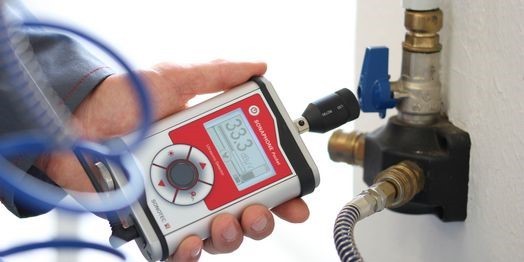Most Popular
-
Vibration Analysis: The Key to Predictive Maintenance
Predictive maintenance offers a powerful toolbox, and vibration analysis is a cornerstone. It excels.. -
Beyond the Basics: Advanced NDT Techniques for Cutting-Edge Predictive Maintenance
This article explores cutting-edge NDT techniques like infrared thermography and acoustic emission t.. -
Don't Wait for Disaster: How Oil Analysis Saves You Money and Equipment?
Oil analysis is a preventive maintenance technique that analyzes oil to predict machine problems and.. -
Power Up Your Reliability: The Essential Role of Vibration Analysis in Wind Energy
Wind turbine vibrations reveal machine health. Analysis helps predict problems early, reducing downt.. -
From Reactive to Proactive: Oil Analysis - Your Weapon Against Downtime
Oil analysis is a powerful tool for the oil & gas industry. By analyzing lubricating oil, companies .. -
From Breakdown to Breakthrough: How NDT Minimizes Downtime and Maximizes Profits
Predictive maintenance uses NDT (Non-Destructive Testing) to inspect equipment for hidden issues, pr..
In the fast-paced world of modern industry, downtime can be devastating. A single malfunctioning machine can bring production lines to a halt, costing businesses significant time and money. Predictive maintenance offers a proactive solution, allowing us to identify and address potential issues before they escalate into full-blown failures. Here's where Non-Destructive Testing (NDT) steps in as a hidden hero of predictive maintenance strategies.
What is Non-Destructive Testing?
NDT refers to a suite of techniques used to evaluate the condition of a material or component without causing any damage. Imagine being able to see inside a machine, identifying cracks, corrosion, or other hidden flaws, all without needing to take it apart! This is precisely what NDT allows us to do.
NDT: A Powerful Ally for Predictive Maintenance
By incorporating NDT into your maintenance routine, you gain a significant advantage.
- Early Detection: NDT allows you to identify problems in their early stages, well before they cause catastrophic failures. This translates to significant cost savings by preventing major repairs or replacements.
- Improved Safety: NDT helps ensure the integrity of equipment, minimizing the risk of accidents and injuries. A proactive approach to maintenance creates a safer work environment for everyone.
- Reduced Downtime: Early detection of issues allows for timely repairs, preventing unplanned downtime and keeping your operation running smoothly.
- Optimized Maintenance: NDT helps target maintenance efforts on specific components that require attention, maximizing efficiency and cost-effectiveness.
NDT in Action: Real-World Examples
Let's explore some real-world applications of NDT in predictive maintenance.
- Ultrasonic Testing (UT): This technique uses sound waves to detect cracks, voids, and other internal defects in metals, plastics, and composites. It's commonly used for inspecting pipelines, pressure vessels, and aircraft components.
- Radiographic Testing (RT): This method uses X-rays or gamma rays to create an image of the internal structure of a material. RT is valuable for detecting internal flaws in welds, castings, and other components.
- Eddy Current Testing (ECT): This technique uses electromagnetic fields to identify cracks, corrosion, and other surface and sub-surface defects in conductive materials. It's widely used for inspecting pipelines, heat exchangers, and tubing.
The Future of Predictive Maintenance
As technology advances, NDT methods are becoming increasingly sophisticated and portable. The integration of real-time data analysis and machine learning is further enhancing the power of predictive maintenance. This allows for more precise monitoring and the ability to predict potential failures even more accurately.
By embracing NDT as a cornerstone of your predictive maintenance strategy, you gain a valuable tool for safeguarding your equipment, optimizing operations, and ensuring a safer, more efficient work environment.
Connect with Arrelic Global on LinkedIn today to discuss your NDT needs!
